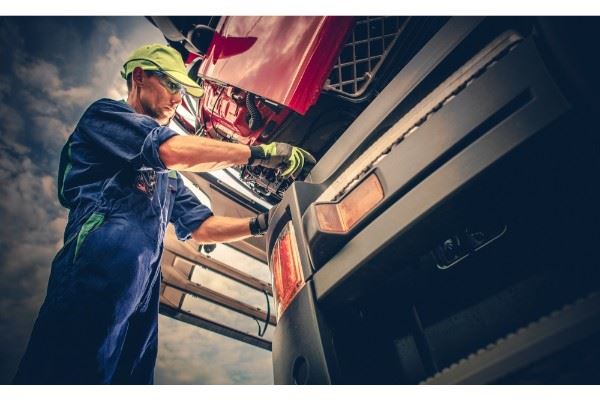
The last thing a driver or fleet manager wants is to have a truck put on an out-of-service order. No matter how long the order is for, it will cost money. If you cannot deliver the cargo before the deadline, it could put future orders with that shipper in jeopardy. Plus, too many incidents could give you a bad reputation. What are the consequences of driving a vehicle after issuance of an out-of-service order?
How does the FMCSA determine a truck is not safe to continue traveling on public highways? What events can lead to an out-of-service order for a trucking firm? And, what are the penalties for violating an out-of-service order? In this article, we will take a look at several criteria and sections of the CFR to clarify some of the answers.
Regardless of what or who puts your truck out-of-service, you need to have a plan. It should be the same as if your truck has a mechanical failure along the highway. You can’t move it. Someone needs to get on the road to restore your truck to operational readiness. Once a truck or driver has been placed out-of-service, you must repair the shortcoming, or wait the required period before driving that vehicle.
Who and What Determines a Vehicle Is Unsafe Enough to Issue an Out-of-Service Order
All commercial motor vehicles (CMV) are subject to the Department of Transportation (DOT) Federal Motor Carrier Safety Administration’s (FMCA) jurisdiction. According to 49 Code of Federal Regulation (CFR) 390.5 a CMV is defined as, “any self-propelled motor vehicle used on a highway in interstate commerce to transport property or passengers when the vehicle has a gross vehicle weight rating or gross vehicle weight of 10,001 pounds or more.”
Your best friend to reduce out-of-service orders during roadside inspections is the Daily Vehicle Inspection Report (DVIR). It is also a mandatory requirement before and during trips. Failure to carry a completed DVIR is a Forms and Manner violations.
Most out-of-service orders resulting from a roadside inspection begin with a shortcoming of the standards established by the Commercial Vehicle Safety Alliance (CVSA). You might wonder who the CVSA is and why they have the authority to put your truck out-of-service.
Actually, most seasoned truckers know that the CVSA is a non-profit organization that provides guidance to the FMCSA and trains inspection authorities across North America, such as the CA Highway Patrol (CHP), who run the weigh stations along California’s freeways.
The Official 2018 CVSA North American Standard Out-of-Service Criteria provides full details, but the top five roadside inspection shortcomings that will get your truck or fleet an out-of-service order are:
- Brakes
- Tires
- Lights & reflectors
- Hours of Service (HOS)
- Driver illness or fatigue
Although the first three shortcomings can get repaired right away, only time can remedy an HOS or fatigued driver situation.
The Consequences of Driving after an Out-of-Service Order
Vehicles and drivers cannot move after one or the other gets placed out-of-service. You are not even allowed to drive the truck to a hotel. Therefore, you must have a plan. Violating an out-of-service order can have severe consequences. 49 CFR Section 383.51 and 391.15 outline penalties for carriers and drivers. The actual period of disqualification is the judge’s discretion; however, they may prescribe any of the following:
- Violation #1, disqualification for 90 days up to 2 years
- Violation #2 within a 10-year timeframe, disqualification for one year and up to five years
- Violation #3 and all subsequent violations within a 10-year timeframe, disqualification for three years and up to five years
Drivers face a minimum fine of $1,000 up to $2,500, a civil penalty for a first conviction of $2,500 and $5,000 for subsequent convictions. The carrier who allows or directs a driver to violate an out-of-service order can receive a civil penalty not less than $2,700 up to $175,000.
Who to Call for Help with an Out-of-Service Order Violation in Kern County
Although Bigger & Harman, (661) 349-9300, have their office in Bakersfield, they frequently assist CDL holders with traffic tickets and out-of-service order violations in Lamont, Mojave, and much further places in California. Call us today for a free consultation today. Se habla Español 661.349.9755.
Send an email to attorney@biggerharmanlaw.com.
References:
The 2018 CA Driver Handbook .pdf
The 2018 California Superior Court Bail Schedule for Infractions and Misdemeanors.pdf
CVC 40508, Release Upon Promise to Appear
The Commercial Carriers Journal (CCJ) article, Out of Service Criteria
The driverslogbooks.com article, Roadside Inspections
The cdlcollege.com article, Out of Service Violations
